Do we need to tell you about the extraordinary beauty of this ancient statue?
We firmly believe that the figures speak for themselves, as spiritual moments and proud reminders of human achievement. We are still thinking and looking at the influence that the Greeks and their art have on modern perception of the human form. We can still take in the appealing of ancient Greek art and this is exactly what makes it so relevant after more than 2,000 years.
So, before we continue, let’s have a minute or two to contemplate this image, its beauty, excellent quality, perfect execution, and not least the emotion it expresses so forcefully, despite the long-lost head, arms, and legs.
What we are looking at is an amazing fourth century BCE statue of a flying Nike (personification of Victory) that once functioned as decoration high up on the Temple of Athena Alea at Tegea in Arcadia, the central-eastern part of the Peloponnese. Today, it is an exhibit in the rather surprisingly beautiful local museum, renovated and re-opened to the public a few years ago, together with several other sculptures, statues, offerings, clay vessels, and figurines which reveal very successfully the regional ancient history.
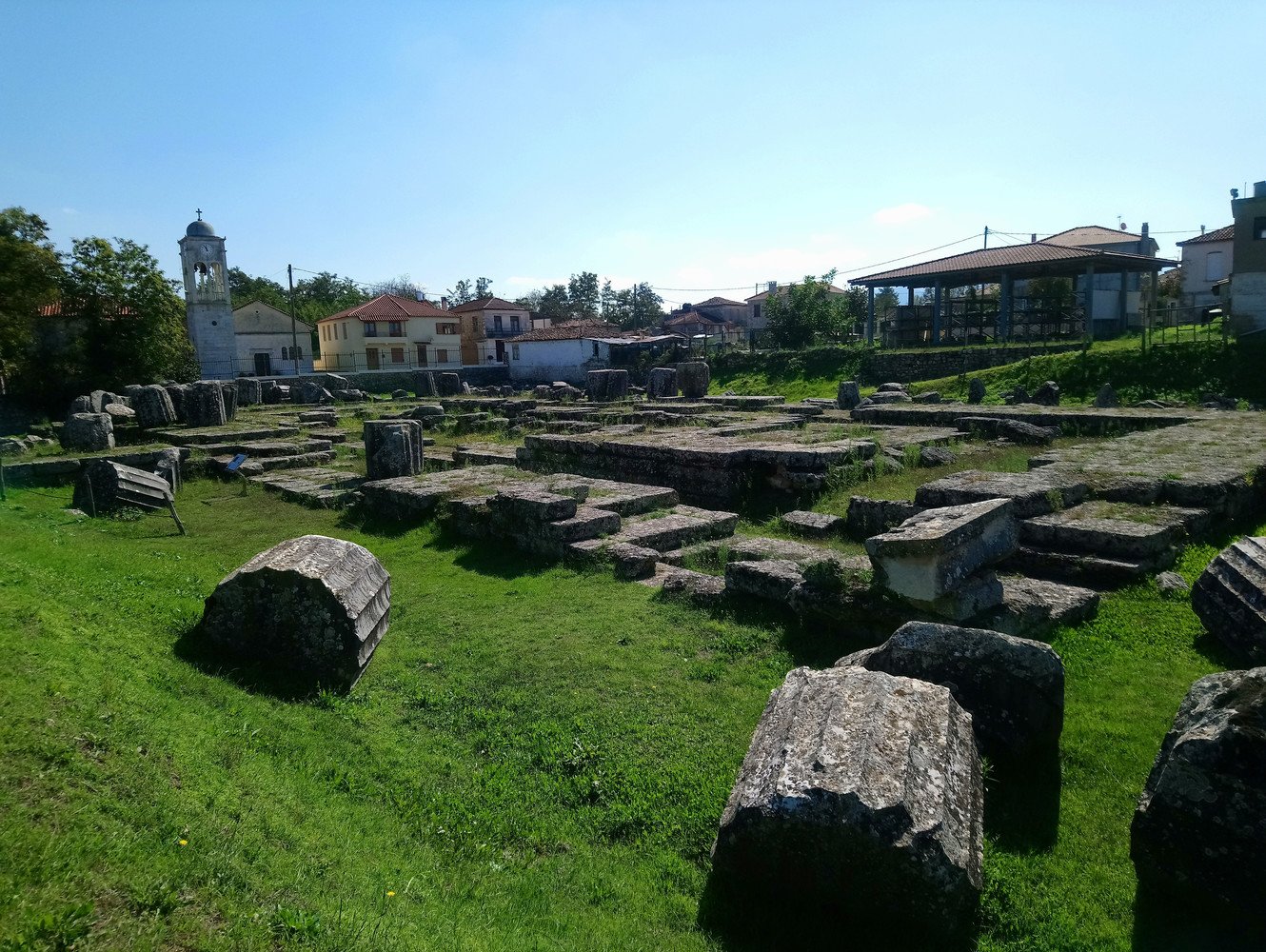
The place itself is a small typical Greek village not far distance from the administrative capital, Tripoli town, and the highway. A central parish church next to its medieval counterpart is fenced by one and two-story houses. A bakery, a grocery store, and a recently opened coffee shop are all scattered next to the archaeological site and the new museum.
In ancient times, Tegea, at the edge of Arcadia, the most remote and mountainous part of the peninsula, held a kind of natural wealth; marble quarries in vicinity, plains and low hills providing acceptable conditions for livelihood and a pastoral economy, and of course, a favorable position near the main routes of communication between the northern (Isthmus) and the southern (Sparta) parts of the Peloponnese. By the 7th century BCE Tegea passed through the process of synoecism (literally means dwelling together – a phenomenon very common to all Greek states) and the creation of a well-organized state, with an autonomous economy, an urban center, sanctuaries, temples, and festivals, in other words with typical Greek modus operandi.
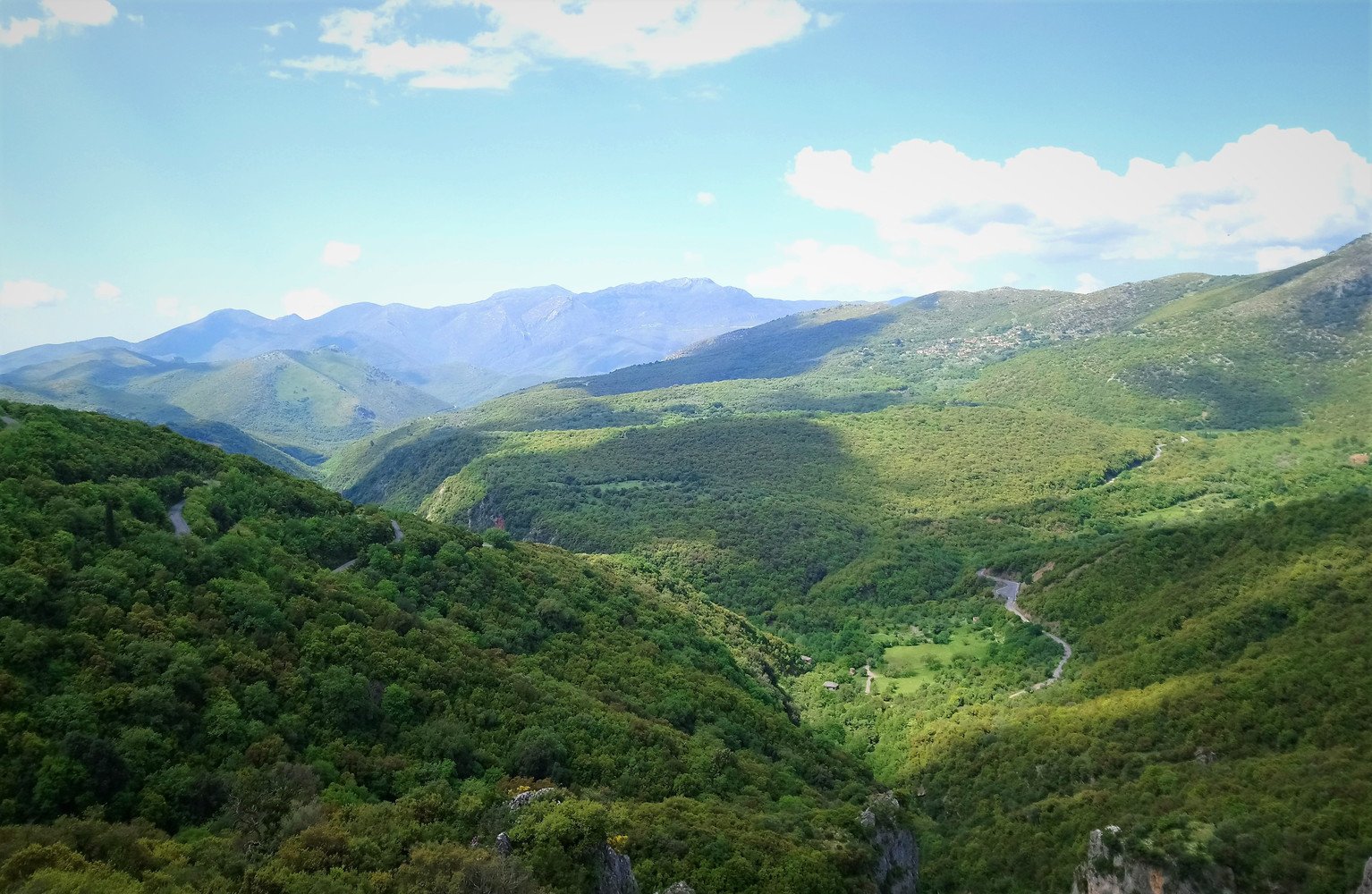
Nowadays, this province is still special and beautiful. It is still an untouched mountainous region of forests, copious fields, and upland valleys, an area that is geographically central but socially and in other terms far-off. A place that is friendly, unusual, and very promising to all travelers.

Aside from the fragmented archaeological remains and art itself, the ancient Greek and Roman scholars provide important data about the destruction of Tegea’s temple by fire in 395 BCE, and its reconstruction in the following decades. Pausanias, the famous 2d century CE traveler, and writer tell us that “the temple at Tegea far surpasses all other temples in the Peloponnese both in size and style”. Pausanias is mistaken about the size (the Temple of Zeus at Olympia is bigger) but surely the Tegea Temple is one of the most remarkable sacred buildings of the Greek world. The exquisite carving and the unusual molding combinations attest to superior workmanship. All the decorative details are rich and of very high quality and herald the best trends of 4th century BCE art and architecture.
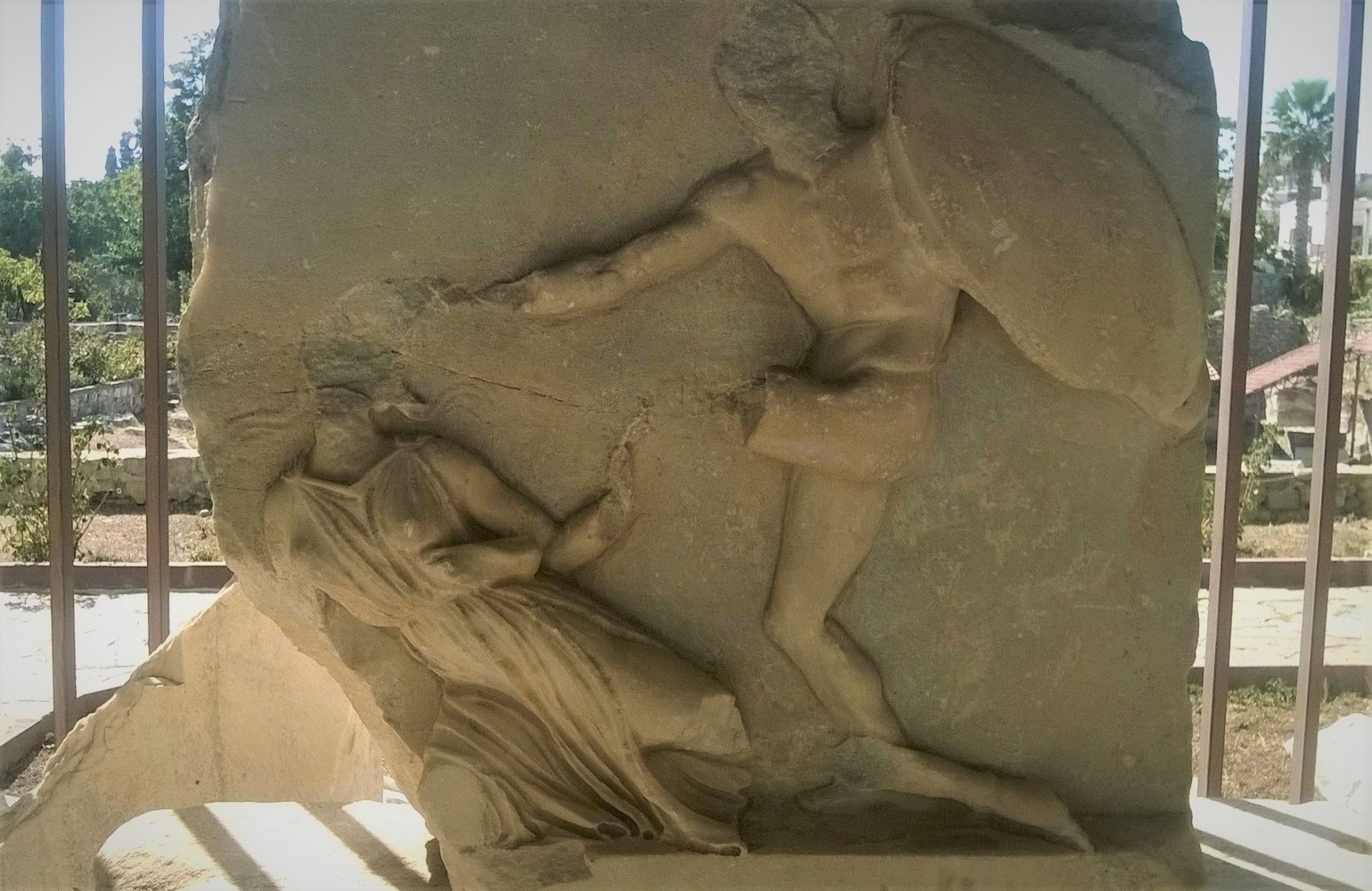
Modern scholars have much debated on the date and style of the building and its sculpture decoration. However, based on stylistic grounds and ancient literary sources, we can now be much certain of the following points. The temple was more likely constructed in the final decades of the 4th century BCE, namely between 345-335 BCE. Its avant-garde features had introduced something new to the traditional architectural forms, and thus the entire structure was used as a model for other temples in the Peloponnese, i.e., the temple of Zeus at Nemea. And finally, Skopas, the famous Greek sculptor from Paros island, was being appointed to accomplish the entire project.
Skopas of Paros (ca., 390-320 BCE) was one of the greatest sculptors of his time, credited with dozens of individual works and connected with numerous prestigious buildings of antiquity. As literary sources tell us, he appears to be an itinerant artist, very active in the Peloponnese, Thebes, and the west coast of Asia Minor, and unlike his contemporary and rival Praxiteles, he was constantly forth and back across the Aegean to supervise multiple projects. Around 350 BCE, he participated in the sculptural program of the tomb of Mausolos, the famous Mausoleum of Halikarnassos (present Bodrum, western Turkey), which was later listed among the Seven Wonders of the Ancient World. His artistic skills are today well-known through several original statues and Roman copies of the prototypes, long since gone.
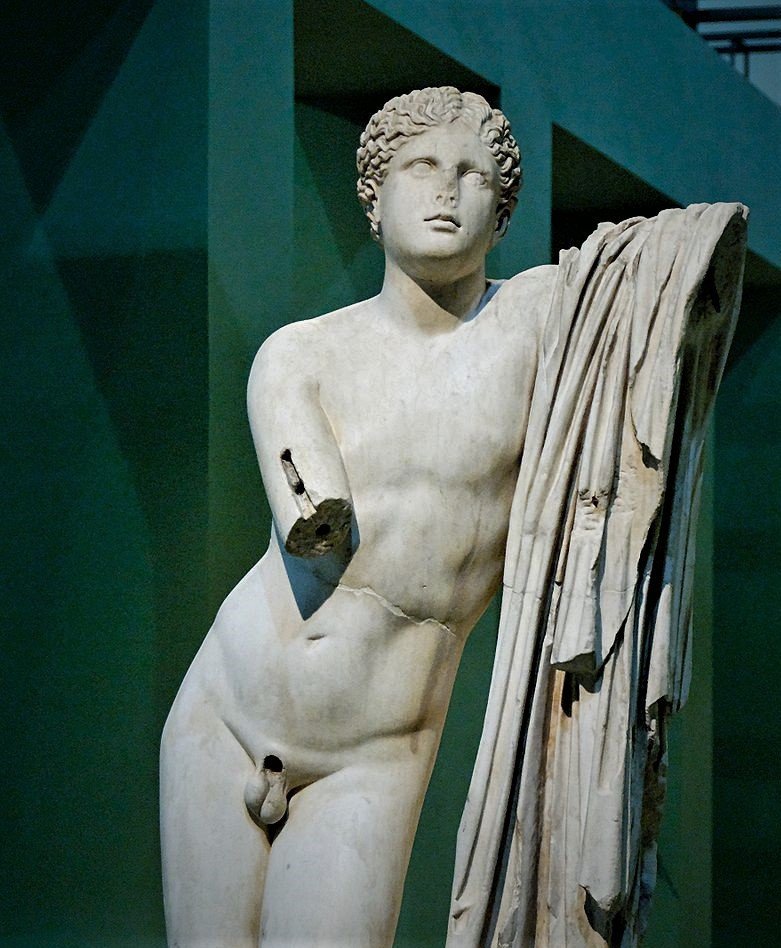
Back to our Nike, she strides forward, her right leg breaking through the opening of her skirt. Her right arm was originally held high, while the left was held out and away from her body. The missing head was turned to her left. Her pose is complex and very dynamic; a three-dimensional figure in full motion descending from the skies to the top of the temple.
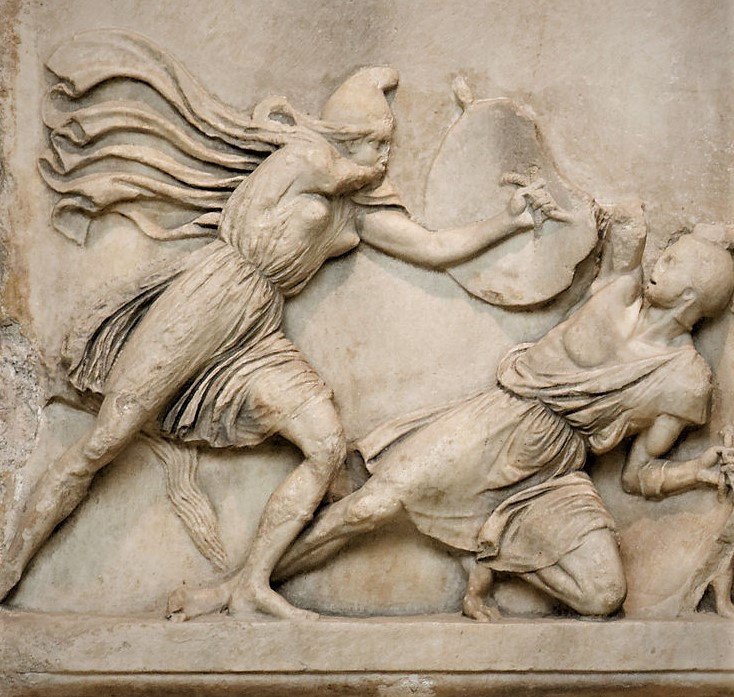
Unlike male nudity, women in ancient Greek art are usually covered by clothing. Perhaps Greek society tried to civilize them by keeping them covered up or protect them from any unwilling attention. But quite often this makes no difference whatsoever. The cloth is usually very thin and the drapery has very little indeed to hide. Excluding Aphrodite, the only goddess being regularly shown naked in Greek art (ca.360 BCE onwards), sensual Nymphs, furious Maenads, battling Amazons and vigorous Nikes expose their bodies while being always in full action. Their disordered clothing reveals a glimpse of their naked flesh, the diaphanous tissues emphasize breasts, thighs, and knees and the figures manifest their inner emotion.
Transforming the marble into warm, living flesh and flowing drapery is the beauty of ancient Greek art. Skopas and his contemporary prominent artists, as well as their predecessors, invented the human body as we now understand it. They invented the human condition, the idea of beauty, they created amazing things and they were constantly talking and debated about them. And now, in western culture, we are bonded to this legacy of antiquity. And that’s the beauty of our Nike, Skopas, and Greek art: it was created in Greece (including Sicily and Asia Minor) by Greeks, it was forgotten, rediscovered by the Renaissance, revived by Western Europe, and finally, it belongs to the entire world.
Written By Nota Karamaouna (Archaeologist – Tour Guide)